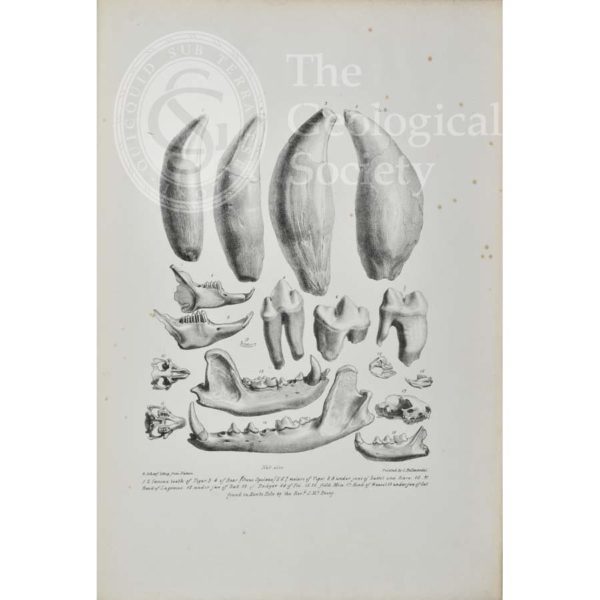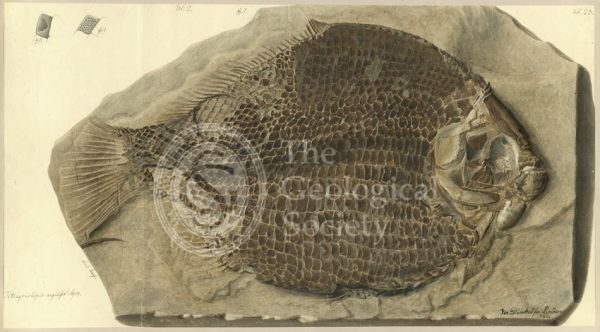Title: Veduta del Tempio detto di Serapide discoperto a Pozzuoli nell’anno 1750 [View of the said Temple of Serapide discovered at Pozzuoli in the year 1750]
Creator: Unknown
Description: The Temple of Serapis is probably one of the most important geological sites in the world. Found in Pozzuoli, near Naples, Italy, it was initially discovered in 1749 when three of the columns were spotted sticking out from the ground. It was first excavated in 1750 which revealed that part way up the columns were signs of borings from marine bivalves. This indicated that the temple was built above sea level, then been under water but was elevated again – the latter caused by the volcanic eruption of Monte Nuovo in 1538.
Although many travellers and geologists visited the site and came up with their own theories to explain the phenomena, the temple is most closely associated with Sir Charles Lyell (1797-1875) who included an image of it on the frontispiece to his book ‘Principles of Geology’ (first published in 1832).
This plate shows the columns and the stone boring mussels the author, Ermenegildo Pini (1739-1825), saw on his visit to the Temple of Serapis in 1782. From Ermenegildo Pini, ‘Viaggio geologico per diverse parti meridionali dell’ Italia. Esposto in lettere’. 2a edn. Milano: Nella Stamperia Mainardi (1802).
The site is not actually a temple, but rather a Roman market place.
Date: 1802
Format: Engraving
Image reference: 02-72
Recommended print size: Up to A4 (30 x 20cm)



